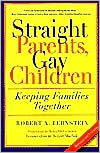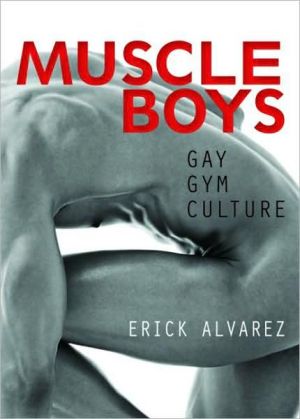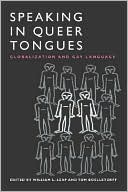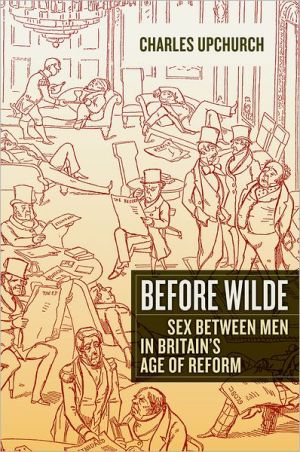Passions of the Cut Sleeve: The Male Homosexual Tradition in China
The first detailed treatment of the Chinese homosexual tradition in any Western language, Passions of the Cut Sleeve shatters preconceptions and stereotypes. Gone is the image of the sternly puritanical Confucian as sole representative of Chinese sexual practices—and with it the justification for the modern Chinese insistence that homosexuality is a recent import from the decadent West. Rediscovering the male homosexual tradition in China provides a startling new perspective on Chinese...
Search in google:
The first detailed treatment of the Chinese homosexual tradition in any Western language, Passions of the Cut Sleeve shatters preconceptions and stereotypes. Gone is the image of the sternly puritanical Confucian as sole representative of Chinese sexual practices—and with it the justification for the modern Chinese insistence that homosexuality is a recent import from the decadent West. Rediscovering the male homosexual tradition in China provides a startling new perspective on Chinese society and adds richly to our understanding of homosexuality.Bret Hinsch's reconstruction of the Chinese homosexual past reveals unexpected scenes. An emperor on his deathbed turns over the seals of the empire to a male beloved; two men marry each other with elaborate wedding rituals; parents sell their son into prostitution. The tradition portrays men from all levels of society—emperors, transvestite actors, rapists, elegant scholars, licentious monks, and even the nameless poor.Drawing from dynastic histories, erotic novels, popular Buddhist tracts, love poetry, legal cases, and joke books, Passions of the Cut Sleeve evokes the complex and fascinating male homosexual tradition in China from the Bronze Age until its decline in recent times. Publishers Weekly Harvard scholar Hinsch's careful study belies the official Chinese notion that homosexuality is a recent import from the decadent West. Photos. (Dec.)
Passions of the Cut Sleeve\ Male Homosexual Tradition Chi \ \ By Bret Hinsch \ University of California Press\ Copyright © 1992 Bret Hinsch\ All right reserved.\ ISBN: 9780520078697 \ \ \ Introduction \ \ \ When Western travelers first described Chinese society to their fellow Europeans they lavished ecstatic praise on many aspects of Chinese culture, including efficient government administration, awe-inspiring public works, and the opulent and sophisticated life-styles of the upper classes. Early European commentators even added Chinese moral values to their idealistic panegyric. But one aspect of Chinese society received strident condemnation and scorn from these first adventurers: homosexuality. For them, the popularity of "the abominable vice of sodomy" was an unforgivable flaw in an otherwise admirable society.1 The sixteenthcentury chronicler Galeote Pereira reported, "The greatest fault we do find [among the Chinese] is sodomy, a vice very common in the meaner sort, and nothing strange among the best."2 The perceptive Jesuit missionary Matteo Ricci related his disgust at the sights he witnessed in Beijing: "There are public streets full of boys got up like prostitutes. And there are people who buy these boys and teach them to play music, sing and dance. And then, gallantly dressed and made up with rouge like women these miserable men are initiatedinto this terrible vice."3 Friar Gaspar de Cruz was even more censorious, portraying China as a new Sodom. He composed an apocalyptic tract in which he described earthquakes, floods, and other natural disasters imposed on China by God in retribution for the tolerance shown by the Chinese toward "a filthy abomination, which is that they are so given to the accursed sin of unnatural vice, which is in no wise reproved among them."4\ These disapproving Westerners were shocked by the perceived ubiquity and deep roots of homosexuality within Chinese culture. They were correct in sensing the existence of a historical tradition of homosexuality in China that dates back to at least the Bronze Age. It gave rise to highly developed expressions, including wellpatronized meeting places and an accumulation of literature catering to homosexual tastes. Many times homosexuality acted as an integral part of society, complete with same-sex marriages for both men and women. It spanned a range of social classes, from famed emperors and aristocrats to impoverished laborers. In all of these circumstances, homosexuality serves as a convenient mirror for viewing an intimate area of human experience.\ Unfortunately, we are left only tantalizing fragments recording the homosexual experience in China. From one century a poem may survive, while the next yields only a terse biography or legal case. In all periods lacunae outnumber surviving records, making systematic social history almost impossible. Nevertheless, this dearth does not condemn us to ignorance of Chinese homosexuality. Rather than study people, I have been forced to concentrate on the homosexual tradition itself. Because Chinese society hasalways held both literary pursuits and examples from the past in exceptionally high regard, it becomes possible to discern a homosexual tradition developing through time, with successive authors taking references from previous works and making them relevant to the collective experience of a writer's own time. Even the conceptions of "homosexuality" as a distinct realm of experience had roots in tradition. In general, homosexuality came to be described through reference to famous individuals of ancient times associated with same-sex love. The special nature of the Chinese experience and sources has therefore determined the approach I take to the subject. Rather than studying "homosexuals" or "homosexuality," this book concentrates on reconstructing the Chinese homosexual tradition.\ Why should a modern Westerner be interested in understandting the sexual practices of a people far removed in both time and place? In Western-centric terms, this sort of investigation allows us to comprehend the sexual practices of our own culture by providing an alternate, sophisticated panorama of sexual behavior. Although contemporary Westerners are apt to regard our own sexual customs as normal and natural, in fact they often differ from the multitude of sexual views held by the bulk of humankind carelessly lumped together as "non-Western" peoples, as well as from many of the sexual practices considered normative in earlier periods of our history. By carefully examining the sexuality of a people divided from us by time and place, we can better understand and question the caprice implicit in our own social and sexual conventions. For a topic as controversial and misunderstood as homosexuality, this sort of cross-cultural comparison assumes particular importance.\ The study of Chinese homosexuality also reveals striking new perspectives on the Chinese themselves. One stereotypical notion that this book should help to dispel is the conception that Chinese in dynastic times conformed to a narrow view of family-based sexuality. Because many scholars of China tend to emphasize the homogeneous aspects of the society, they often ignore the tolerance of diversity present among many peoples and in numerousplaces throughout Chinese history. The relative toleration of homosexuality by the upper classes, and perhaps among other less-documented social strata as well, stands as proof of this point.\ The long duration of tolerance allowed the accumulation of a literature and sense of history that in turn enabled those with strong homosexual desires to arrive at a complex self-understanding. In many periods homosexuality was widely accepted and even respected, had its own formal history, and had a role in shaping Chinese political institutions, modifying social conventions, and spurring artistic creation. A sense of tradition lasted up until this century, when it fell victim to a growing sexual conservatism and the Westernization of morality.\ Despite the denouement of the homosexual tradition in our own times, when viewed in a broad historical perspective the record is one of general tolerance toward homosexuality in China. We should note how the West has responded to this and similar examples of sexual tolerance. As Westerners made their way across Asia, they constantly found proof of their own moral excellence. The words of hostile Europeans such as Pereira and de Cruz reveal how travelers from the West were quick to divide the world into a morally virtuous Occident superior to what they saw as the exotic decadence of the Orient.5 Europeans exalted their own hostilities as examples of moral purity while viewing tolerance of homosexuality as evidence of Oriental moral degeneracy. Thus homosexuality became a focal point for division between China and the West.6\ Most importantly, homosexuality provides us with a convenient entrée into one of the most intimate, hence central, aspects of existence for the peoples of dynastic China. For example, the influence of family life on all aspects of society acquires new depth when seen from the standpoint of homosexuality. Likewise, homosexuality allows us to view a spectrum of personalities and institutions from a novel perspective. Yet precisely because homosexuality gives us access to the most intimate areas of the Chinese identity, we must take care not to project too much ofourselves onto our subject matter. As recent revisionist historiography has shown, the field of Chinese history in the West has all too often involved an imposition of our own priorities and intellectual frameworks onto a different culture.7 This flawed approach has long been implicit in many Western studies of China, and occasionally even becomes explicit. For example. Max Weber, patron saint of social scientists, readily admitted that he undertook his monumental studies of Asian society according to a Western intellectual agenda: "These studies do not claim to be complete analyses of cultures, however brief. On the contrary, in every culture they quite deliberately emphasize the elements in which it differs from Western civilization. They are, hence, definitely oriented to the problems which seem important for the understanding of Western culture from this view-point."8\ To avoid the methodological insensitivity of Weber and his intellectual heirs, we must deal carefully with our subject matter. For the topic of sexuality, which almost always evokes deeply held preconceptions while challenging even the most dispassionate reader's basic self-identity, culture-blind objectivity becomes a distant chimera. Nevertheless, we must strive for the difficult goal of understanding Chinese sexuality on its own terms if we are to understand it at all.\ I have two main goals for this study: first, systematically to present translations of the most important original sources dealing with the history of the homosexual tradition in China; and second, to present an interpretive framework for understanding the Chinese homosexual tradition that is as free as possible from Western preconceptions. In structure, this book develops along both chronological and topical lines. Although I generally proceed chronologically, the nature of surviving records from each era determines the main points of focus for each period under discussion. Thus my description of ancient history, known primarily from a few official histories, deals with the sexual practices of the uppermost elite; the literature surviving from later periods provides insight into the lives of the literati; and late-imperial sourcesdescribe in detail the lives of young male prostitutes and their patrons. By combining these differing perspectives I hope to forge a broad survey of the homosexual tradition.\ I do not intend to present all surviving evidence of Chinese homosexuality; such an undertaking would be needlessly vast for an introductory survey and would fill many volumes. Instead I will merely delineate the major forms of sexuality reflected in the evolving homosexual tradition. The continuity of these various practices and concepts, as seen in the variety of historiography and literature that describe them, constitutes the homosexual tradition of China.\ Male homosexuality, like all other forms of sexuality in China, inspired few writings relative to other topics, such as the opposing concerns of court intrigue and ethics. In this respect the Chinese case contrasts starkly with the enormous literature on homosexuality from other cultures, such as Greece and Japan. While this relative dearth may seem puzzling in light of the repeated indications that homosexuality was quite open among the upper classes in many periods, the very nature of Chinese literature accounts for this lack. Chinese biography remained tightly tied to the narrow concerns of politics and failed to develop an independent epic tradition centered on the individual apart from society; prose fiction emerged late in imperial history and remained weak and despised compared to other literary traditions; and philosophers discussing questions of human nature and morality dealt only with the public face of virtue. Biography and philosophy therefore generally ignored the world of private experience, such as sex. By discouraging discussion of sex, this overall orientation of Chinese literature complicates the reconstruction of the homosexual past. Fortunately, though, despite these forces working against the recording of homosexual history, enough material remains for us to speak of a homosexual tradition in China.\ Indeed, instead of a "homosexual tradition," it might be more accurate to speak of the "male homosexual tradition." Unlike modern Western society, which sees male homosexuality and lesbianism as related, the Chinese viewed them as completelyseparate forms of sexuality. A Chinese woman reading about the history of homosexual men would not have drawn a parallel with female sexuality. Consequently, what I say about the "homosexual" tradition in China applies only to men. Because Chinese literature was almost always written by men for men, very little documentation survives on lesbian life. I have gathered most of the scanty evidence I have found on the nature of lesbian relations into an appendix. I hope readers do not mistake my intentions in this "separate but unequal" treatment. This is not just a token section thrown in to appease a certain readership: it represents the results of my earnest efforts to uncover the Chinese lesbian past. I sincerely regret my limited success.\ We must take care when discussing male homosexuality in the Chinese context, because classical Chinese lacked a medical or scientific term comparable to "homosexuality" or "homosexual." Instead, it was usually discussed using poetic metaphors referring to earlier men or incidents famed for association with homosexuality. Chinese terminology therefore did not emphasize an innate sexual essence, but concentrated rather on actions, tendencies, and preferences. In other words, instead of saying what someone "is," Chinese authors would usually say whom he "resembles" or what he "does" or "enjoys." Another popular way of describing homosexuality was in terms of social roles. Hence early records mentioning men who had sexual relationships with the emperors call them "favorites," a description of their political status, not of an innate sexual essence. Both abstract terminology and actual sexual practices differ between China and our own society, suggesting the need for great caution in dealing with the Chinese case.\ Understanding the specific context of homosexuality in China requires us to decide on some specific theoretical tools. Most fundamental among the issues to be determined are the interrelated questions of what constitutes and "causes" homosexuality. On one side, "essentialists" like John Boswell argue that certain people have a predisposition to homosexual acts that transcends cultural conceptions of sexuality and therefore allows us to categorize them according to their sexual essence as homosexual. In theopposing camp, "social constructionists" like Michel Foucault see homosexuality as an artificial construct created by a limited number of cultures, like those of the contemporary West, and therefore lacking objective validity and indiscriminate cross-cultural applicability.\ These positions have been portrayed as opposites, with a resulting polarization of studies regarding homosexuality. As a partial remedy to this split we should recall that anthropologists such as Claude Lévi-Strauss often note how human beings tend to divide the organic whole of reality into what sometimes seems like arbitrary polarities. Academic culture is not immune to this love of bifurcation. In fact, these "opposite" conceptions of homosexuality can be reconciled as simply different aspects of a complex phenomenon. The two groups disagree about the etiology of homosexuality because they see the phenomenon of homosexuality differently. Essentialists define homosexuality psychologically, according to inner thoughts, desires, and predispositions. Social constructionists prefer a behavioral definition, viewing homosexuality primarily as an action. Essentialists therefore emphasize factors of biology or psychology that condition individual tendencies, while social constructionists concentrate on how society shapes the expression of individual sexuality. Rather than mutual contradiction, both points of view have heuristic value for the investigation of sexuality on the level both of individuals and of society as a whole.\ Next, we must decide on specific models and approaches that can help us understand the particular nature of homosexuality in China. On a physical level, surviving literature depicts anal intercourse as the preferred form of homosexual intercourse. Even in heterosexual contexts, references to anal intercourse appear in early sex manuals,9 traditional sex jokes, erotic art, and vernacular literature. Among the references to homosexuality that mention explicit sexual positions, anal intercourse is most common by far;references to mutual masturbation, intercrural intercourse, fellatio, and other forms of intercourse are relatively rare.\ Going beyond sexual intercourse, on examining social and sexual practices specific to China we can draw two basic sets of complementary roles: dominant/submissive and active/passive. It becomes easier for us to understand the Chinese case when we recall that a similar taxonomy also became the standard convention in both ancient Greece and Rome. The Greeks referred to the active male as erastes and the passive male as eromenos, 10 while the Latin language even contained separate words for male prostitutes, classifying them as active exoleti and passive catamiti. 11\ The first of these pairs, dominance and submission, was derived from the social standing of each partner. Chinese of dynastic times were acutely sensitized to disparities in social standing. This consciousness conditioned even mundane daily encounters among individuals, and in a matter as important as sexuality it was difficult to ignore. The three main factors determining dominance were gender, age, and status. It is difficult to generalize about gender, since female roles have undergone numerous transformations through the course of Chinese history. Even so, the patriarchal elements usually referred to as "Confucian" or "feudal" by modem scholars generally forced women into social submission; this social inferiority of women affected the condition of men who became identified with female gender. Age provided a more easily evident grounds for hierarchization, with a younger male yielding to an older. As for status, education, employment, family background, wealth, talent, and a multitude of other factors all contributed to the general perception of a man's overall social status, making the term somewhat nebulous. At times age, gender, and status could conflict, a clash of values that might lead a poor elderly peasant to kowtow to a young noblewoman. Despite such complications, age, gender identity, and status were important for apportioning dominant and submissive roles in many social and sexual encounters.\ Separate from dominance and submission, but often related to them, is the second division: active and passive sexual roles. Like social dominance, sexual activeness was often based on a sense of hierarchy, with the active partner usually engaging in the penile penetration of the submissive partner. The majority of documentation concerning homosexual intercourse depicts partners taking distinct sexual roles. References to mutual anal penetration and other instances of flexible sexual roles are rare, though this lack of visibility might be due simply to the bias of the original sources.\ These two hierarchies, sexual and social, are important to the study of Chinese homosexuality because in many cases they were related: the dominant male was also often the active male. Superior wealth, age, employment, or education could result in domination not only of social intercourse, but of sexual intercourse as well. The institutionalization of male prostitution by boys and low-status actors, among others, helped to solidify sexual roles. In later imperial history, certain types of feminizing clothing and cosmetics became associated with passive sexuality, and wearing them could depress social status. But despite all that this active/passive dichotomy can demonstrate about the influence of sexuality on society, it remains of limited use owing to the coy silence in most Chinese sources as to specific sexual acts. Only with the rise of vernacular literature catering to indelicate popular fancies do we find sufficient explicit evidence to apply this theoretical tool.\ Moving from the sexual act to the individual, we find that men often manifested sexuality differently depending on their stage in life. Some men even progressed through a sexual life cycle. Chinese literature shows a tendency for boys and adolescents to take the passive sexual role and for grown men to take an active role. Thus a man's sexual role might change as he grew older. This acceptance of changing sexual roles gave a certain fluidity to the sexual development of an individual male while still allowing a sense of hierarchy within each relationship when hierarchy was desired.\ The most clear-cut example of a transformation of sexual roles through a sexual life cycle is provided by the Sambia of Papua New Guinea. As part of initiation rituals into the men's cult that every boy undergoes, a prepubescent boy must regularly fellate boys from the adolescent age group. When this boy passes into the adolescent group, he ceases fellating his elders and is insteadfellated by his prepubescent juniors. Finally, on achieving manhood he marries and enters a heterosexual stage that lasts his entire adult life.12 Thus in Sambia society when we look at actions rather than essence we cannot speak of "homosexual" but must instead classify individuals according to their particular sexual role at a particular time in their life cycle.\ Many Chinese men experienced similar, though less rigid, transformations in sexual roles. In addition to changes in homosexual roles assumed at different stages of a man's life, Chinese records also describe many men who experienced both heterosexuality and homosexuality during their lives. Subsequent chapters will explore the prevalence of bisexuality over exclusive homosexuality in China. In part, this blindness to gender is attributable to religious, social, and economic factors. Some men undoubtedly had sexual intercourse with women because they were expected to do so, not because they desired it. As with the Sambia, society's expectations often determined the ways in which Chinese men manifested their sexual desires.\ The general social manifestations of homosexuality in China can be illuminated through the typology popularized by David Greenberg, who divides the social expressions of homosexuality outside of the modern West into four categories: "transgenerational homosexuality," "trans-genderal homosexuality," "class-structured homosexuality," and "egalitarian homosexuality."13 All four of these paradigms are present to varying degrees in the Chinese tradition.\ Trans-generational homosexuality, a common form of relationship in many periods of Chinese history, involves the determination of social and often sexual roles according to relative age. In general, the older partner takes the active role, with the younger acting in the passive role. Trans-generational homosexuality often occurs in ritual contexts as part of coming-of-age ceremonies, with the Sambia providing a prime example of this practice. Sexual relationships between men and boys also take place outside of ritual contexts in many cultures, such as ancient Greece. Rulers in several societies, among them the Mamlukes of medievalEgypt and chiefs of the Big Namba, even included boys in their harems.14 We see the similar appearance of boys kept for sexual purposes in the households of Chinese rulers and other wealthy men. Since dealings between boys and older men in China usually involved a gap in economic standing as well as age, prostitution often resulted. Consequently, we must consider many aspects of trans-generational homosexuality in China in terms of classstructured homosexual relations as well.\ In trans-genderal homosexuality, one partner acts and even dresses as a woman, thereby allowing the relationship to be structured according to masculine/feminine roles. The best-known example of this practice is represented by the Native American berdache, a man who would dress as a woman and take on a female identity, usually as part of a shamanistic cult.15 Most male berdaches limited themselves exclusively to passive homosexual intercourse, taking as partners men of a "masculine" gender identity rather than other "feminine" berdaches. Similar examples of trans-genderal homosexuality can be seen in other societies that include ritualized homosexuality as part of religion, from Mesopotamian male temple prostitutes to Paleo-Siberian shamans.16\ Homosexuality in historic China was usually not ritualized or made a component of religion, as it was in many kinshipstructured societies. Consequently, the Chinese lacked the basic impetus for institutionalized trans-genderal homosexuality, with only the stylized world of the theater promoting female identities for some men. As a result, trans-genderal homosexuality in China mainly occurred among some eunuchs who happened to favor other men, male actors who played female roles, and a small minority of men who simply preferred taking on a female gender identity.\ Class-structured homosexuality is made possible by the division of society into unequal social classes, a condition that existed for most of Chinese history. Inequality of wealth allows members of one class to purchase the sexual services of another. Prostitution exemplifies class-structured homosexuality, and it functioned in China much as in the West. In addition, Chinese society experienced the rise of "favoritism," which resembled prostitution in that lower-status men accepted favors from those of higher status, and yet differed in that the favors were often more subtle in form than simple cash gifts. For example, many emperors lavished offices and titles on beloved courtiers.\ The last category in this typology is egalitarian homosexuality. Under this form of sexual expression, active/passive roles do not exist, are unstable, or lack reference to social status. Egalitarian homosexuality is frequent among adolescents, as well as in societies with strict segregation based on gender or age. In other cases, sexual relationships among male equals are simply considered acceptable without any extraneous factors being necessary, such as among the Tapirape of Brazil and in the contemporary West.17 In China, egalitarian homosexuality appears in the account of adolescent love in Dream of the Red Chamber (Honglou meng) and in some literati friendships. Rulers also often rewarded their favorites profusely with high office and large amounts of land and money, with the side effect of lessening the social gap between them.\ Other forces at work within society could encourage egalitarianism as well. The Chinese language is relatively egalitarian, especially compared with other Asian languages such as Javanese and Japanese, in which inflections and the very lexicon are continually adjusted according to the relative social positions of the speaker and the person addressed. Group organizations and communities often emphasized the equality of members through ritual and ideology. And friendship itself has long been treasured in China, often allowing for a breakdown of social barriers whether the friends were refined literati or coarse laborers. Perhaps among the silent, masses outside of this study—two peasants in the same village, fellow sailors on a grain barge drifting down the Yangzi, two apprentices in the same guild—their love might have been expressed as the love of comrades.\ Having put forward all of these theoretical tools, we find ourselves with an impressive array of useful models: the sexual life cycle, division of roles as active/passive and dominant/\ \ \ \ submissive, and a four-part typology of the forms of homosexuality as trans-generational, trans-genderal, class-structured, and egalitarian. Of course, these models lack absolute applicability or value and are intended only as general paradigms for helping to categorize and understand the Chinese homosexual tradition in all its complexity. But by attempting to comprehend the spectrum of Chinese sexuality on its own terms, rather than simply forcing our own practices and preconceptions upon it, we can begin to appreciate an important dimension of Chinese civilization.\ In the end, I hope that the reader will gain an impression of the enormous diversity of the forms of homosexual life in China. Romance and lewdness, tolerance and violence, power and poverty—all were part of the intricate tapestry of human lives and passions that came together because of homosexuality. The area I cover, geographic and temporal, is vast, the amount of surviving information about this enormous expanse, minuscule. At best I hope to recreate a few fleeting glimpses of the human lives hiding behind the yellowed pages that remain our tenuous links to earlier times. The incalculable diversity of China frustrates this task: an emperor and peasant who both experienced love for another man would have had little else in common. But it is precisely because the homosexual tradition cut across all barriers that it presents us with an invaluable way to comprehend the complexity of the Chinese past.\ \ \ \ \ \ \ Continues... \ \ \ \ Excerpted from Passions of the Cut Sleeve by Bret Hinsch Copyright © 1992 by Bret Hinsch. Excerpted by permission.\ All rights reserved. No part of this excerpt may be reproduced or reprinted without permission in writing from the publisher.\ Excerpts are provided by Dial-A-Book Inc. solely for the personal use of visitors to this web site. \ \
\ Publishers Weekly - Publisher's Weekly\ Harvard scholar Hinsch's careful study belies the official Chinese notion that homosexuality is a recent import from the decadent West. Photos. (Dec.)\ \ \ \ \ Library JournalHinsch cites evidence of the homosexual tradition in China derived primarily from literature--novels, poetry, and (often very frank and graphic) humor--and secondarily from historical documents. This evidence reveals societal attitudes toward various facets of the issue, such as superior-inferior relationships, prostitution, and political corruption. Examples from the earlier dynasties are few, and here Hinsch often resorts to reading between the lines; throughout there are conclusions based on supposition or assumptions. Nevertheless, the material is well covered, and monographic treatment of the topic is scanty. Recommended for Chinese and gay studies collections.-- Kenneth W. Berger, Duke Univ. Lib., Durham, N.C.\ \








